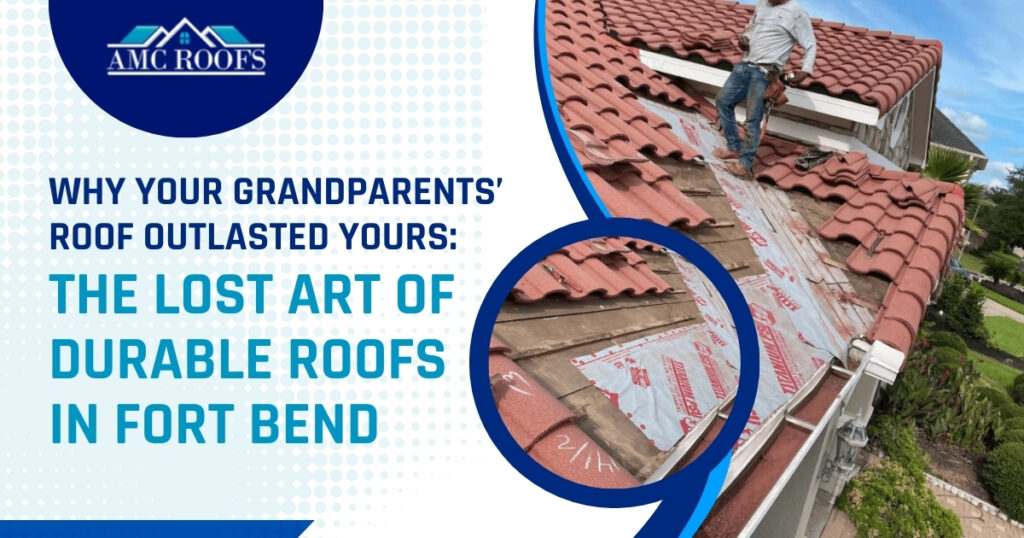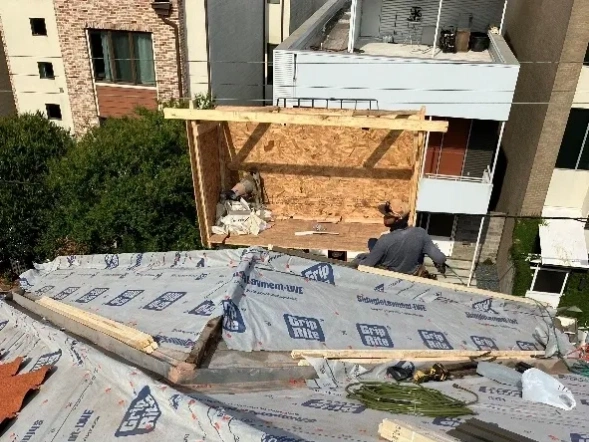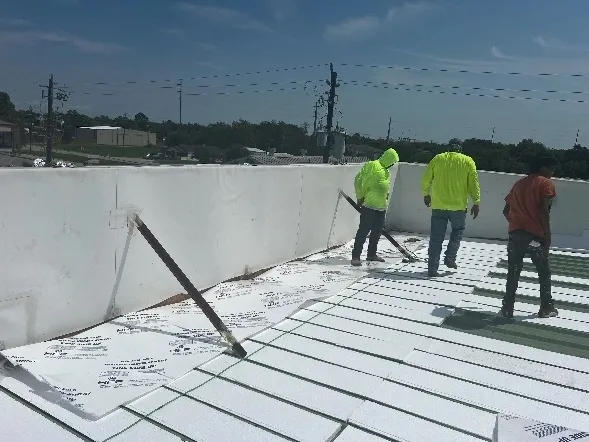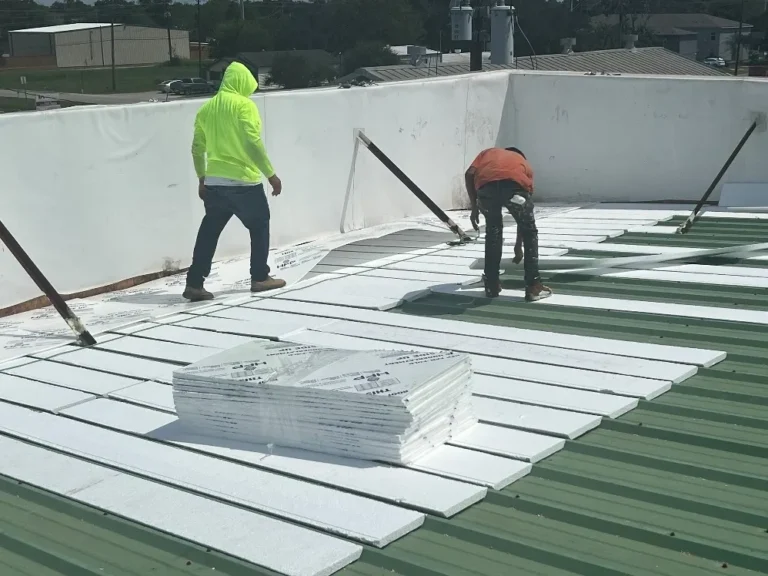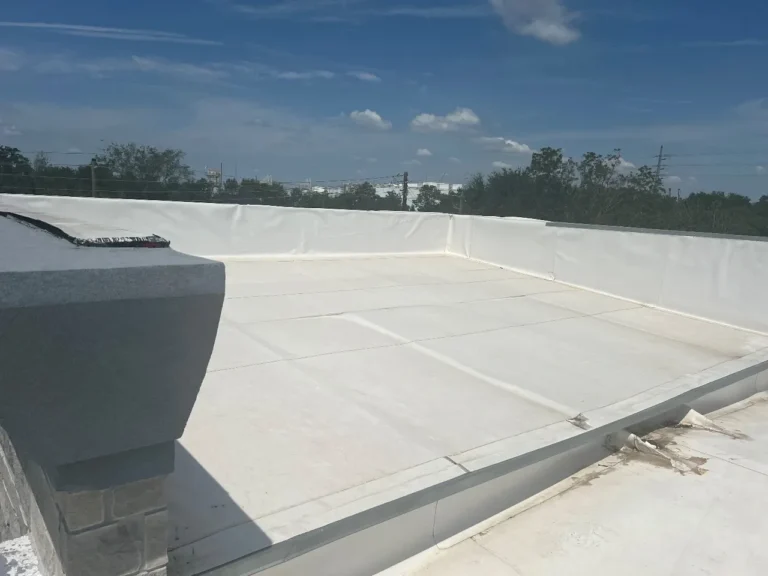Have you ever wondered why your grandparents’ roof held up for half a century, while yours seems to struggle past 20 years?
It‚Äôs not just nostalgia‚Äîthere‚Äôs a real difference in the materials and methods used then and now. In areas like Sugar Land, Missouri City, and Richmond, many mid-century homes still boast clay tile or slate roofs¬Ýlaid in the 1950s. These materials, installed with craftsmanship and care, often lasted 50 years or more. Today‚Äôs asphalt shingles, on the other hand, frequently require roof replacement¬Ýwithin two decades.
What changed? And more importantly, how can homeowners today restore that same level of longevity?
From Craftsmanship to Convenience
In the 1950s, roofing services¬Ýrelied heavily on high-quality, locally sourced materials like clay, slate, and cedar shake. Roofers trained through apprenticeships and had a deep understanding of weatherproofing techniques. These roofs weren‚Äôt mass-produced‚Äîthey were hand-laid, brick by brick, tile by tile.
Fast forward to the modern era, and convenience has often replaced craftsmanship. Today‚Äôs roofs are typically made of mass-produced asphalt shingles, designed for affordability and ease of installation. But with convenience came compromise. While many manufacturers market their shingles as ‚Äú25-year‚Äù products, homeowners often find themselves scheduling roof repair¬Ýor roof replacement¬Ýfar sooner due to wind damage, UV degradation, or shingle curling.
The Problem With Planned Obsolescence
Recent lab testing by roofing material analysts revealed that modern asphalt shingles lose up to 40% of their waterproofing capabilities within the first 8 years. That’s a sharp contrast to clay tiles, which naturally repel water and resist sun damage for decades without additional treatment.
Even worse, many mass-market shingles are engineered with planned obsolescence in mind. Lighter weight, thinner substrates, and cheaper binders contribute to premature aging and early failure. Homeowners looking for lasting value often end up paying more over time through frequent repairs or full roof replacement.
This is where AMC Roofs is changing the game.
AMC Roofs: Bringing Back Durability
AMC Roofs specializes in bringing back the lost art of longevity. From roof installation¬Ýin Sugar Land to tile restoration in historic Richmond neighborhoods, they‚Äôre reviving the tradition of roofs that are built to last, not built to fail.
For historic homes, AMC offers stunning clay tile and stone-coated steel options that combine classic aesthetics with modern durability. These materials have proven resistance to hail, fire, and wind, making them ideal for roofing services¬Ýacross Fort Bend County and beyond.
Their work in Missouri City‚Äôs vintage communities includes not only roof maintenance¬Ýbut also full upgrades with stone-coated steel‚Äîa lightweight alternative to slate that maintains historic charm without overloading older structures.
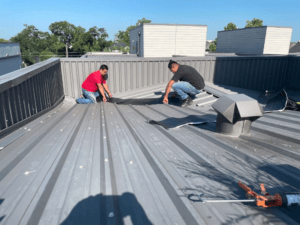
A Return to Value and Craft
AMC isn’t just another roofing company. They see themselves as stewards of your home’s longevity. Their team focuses on tailored solutions—from material selection to detailed installation—ensuring your new roof isn’t just code-compliant, but investment-worthy.
Whether you need roof repair¬Ýin Katy or are exploring full roof installation¬Ýin Richmond, AMC brings the same level of craftsmanship and attention to detail that your grandparents would‚Äôve expected. That means fewer repairs, less maintenance, and more peace of mind.
Built to Last—Again
It’s time to expect more from your roof. Whether you own a newly built home or a historical gem, a roof should be more than just functional—it should be dependable, durable, and designed to stand the test of time.
Ready to bring old-school quality back to your roof?¬ÝLearn about our team and mission, explore our premium roofing services, or get in touch today¬Ýto schedule a consultation.
Let’s build a roof that lasts—not just for 20 years, but for generations.

